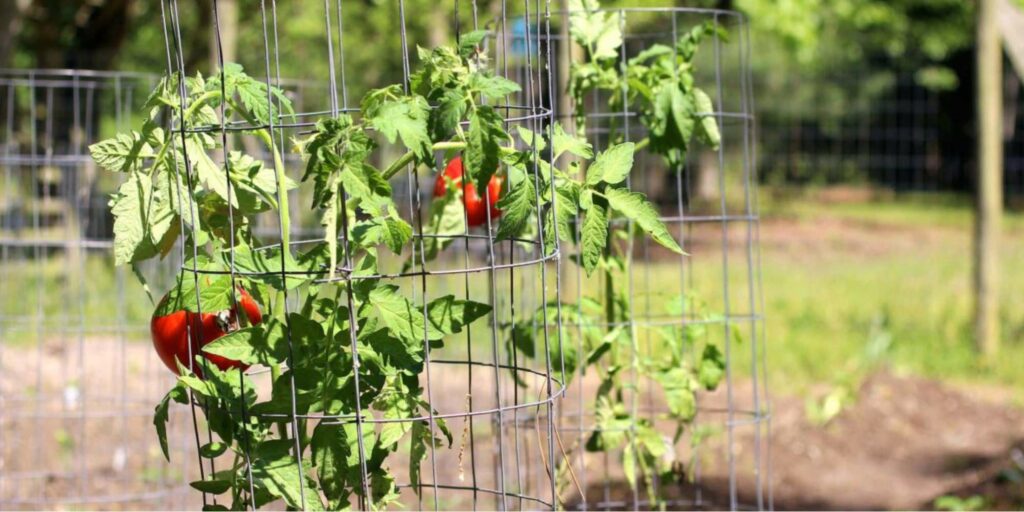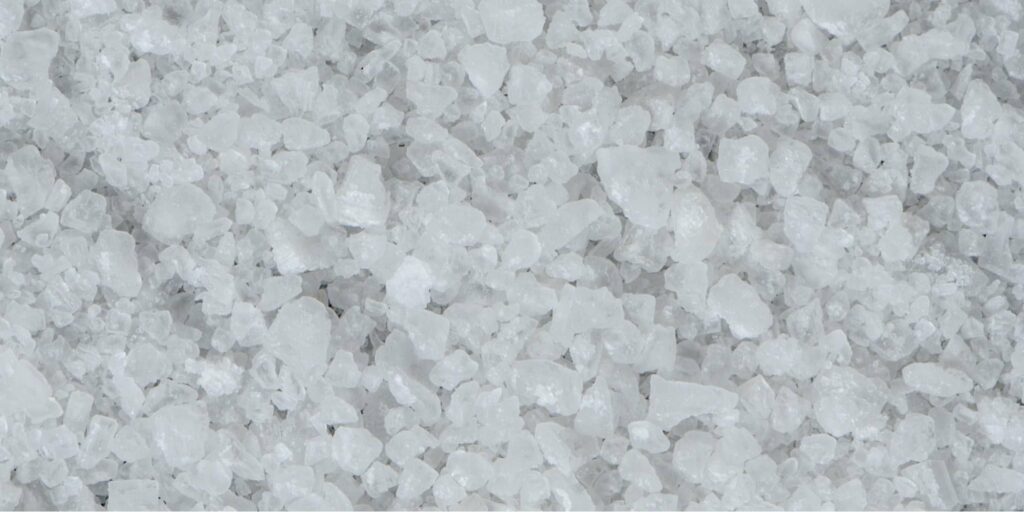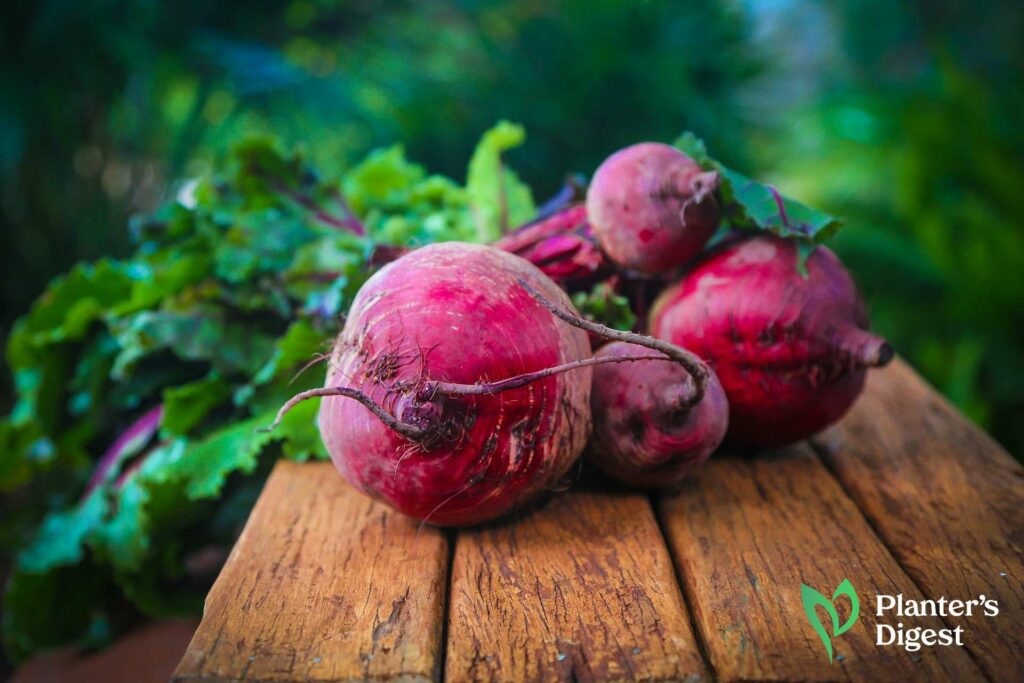
Has someone ever asked you if beetroot was a fruit or vegetable, but you didn’t know the answer? Ironically, your face must’ve been as red as, well, a beetroot in embarrassment!
Well, you’re not alone. Many are also confused since beets are highly nutritious like most vegetables, yet deliciously sweet like most fruit and eye-catchingly red all the same time.
In this article, we will end this confusion once and for all. Read on to find out what the answer is!
Is beet a fruit or a vegetable?
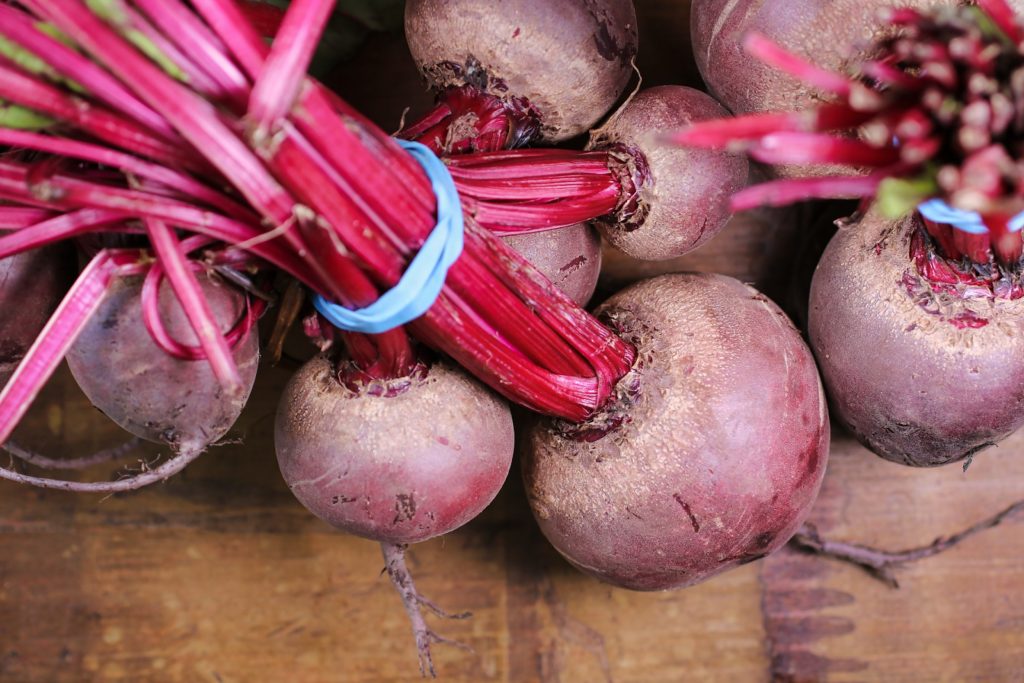
Beet is a vegetable – to be specific, a root vegetable.
A beet plant comprises a root, stem, leaves, and flowers. The bulbous, fleshy reddish-purple part we eat is its taproot, making it a true root vegetable.
What are beets?
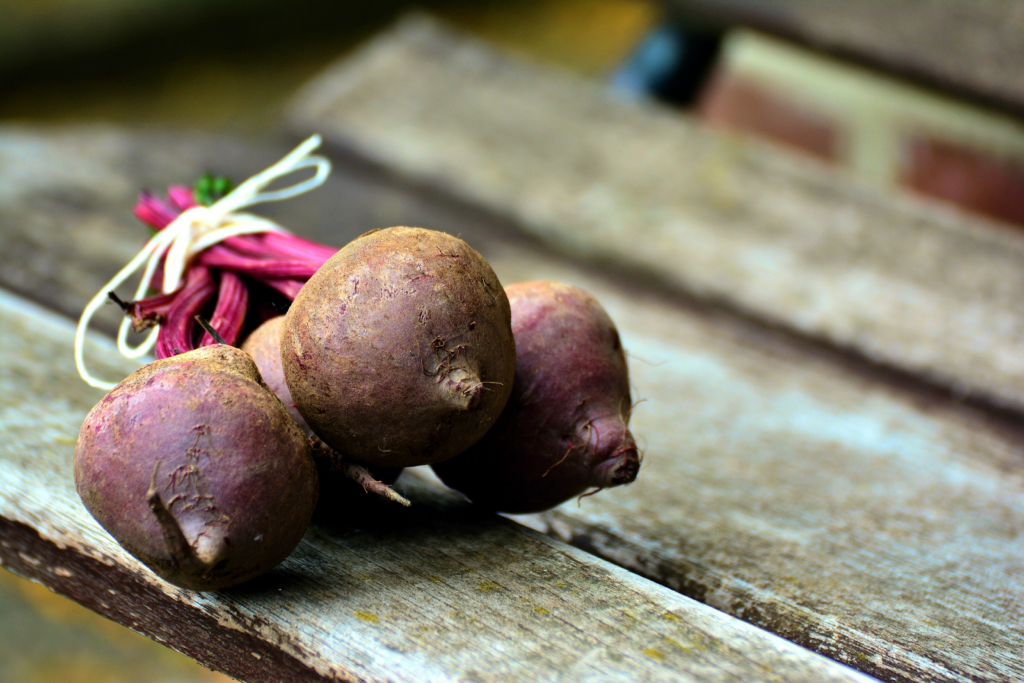
Beets (Beta vulgaris) are fleshy round purple-red root vegetables.
They’re also known as table beet, red beet, spinach beet, garden beet, roman kale, sugar beet, or Swiss chard.
| Scientific Name | Beta vulgaris subsp. vulgaris |
| Common Name | Beet Beetroot Garden Beet Red Beet Roman Kale Sugar Beet Swiss Chard |
| Family | Amaranthaceae |
| Region of Origin | Europe Mediterranean |
| Growth Rate | Medium |
| Maintenance | Low |
| Light | Full Sun Partial Shade |
| Soil | High Organic Matter Good Drainage Moist |
| Landscape Location | Container Small Space Edible Gardens |
During its first year, the beet plant develops a bulbous taproot and a rosette of leaves emerging from the soil’s surface.
The leaves of the beet plant are easily identifiable with their elliptical shape and reddish-purple veins.
In its second year, the beet plant forms a branched, leafy stem where small green flower clusters bloom. After the flowers are pollinated, they turn into tiny brown seed balls.

The beet plant is widely cultivated for its fleshy taproots. They are steamed, boiled, pickled, baked, or consumed raw for salads, soups, and other culinary purposes.
The leaves and stems of the beet plant are also edible and used for traditional medicines.
What are the benefits of eating beets?
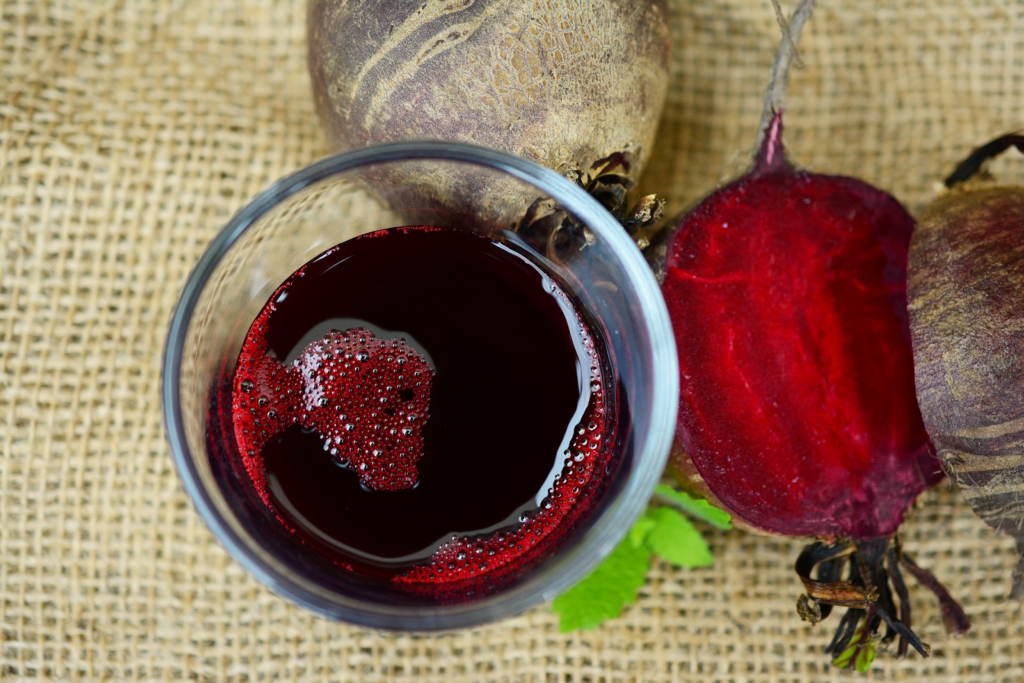
Beetroots are packed with essential vitamins and nutrients that help lower blood pressure and increase exercise endurance.
1. Lowers Blood Pressure
Beets are rich in inorganic nitrates that help lower blood pressure and reduce the risks of heart diseases.
Studies have shown that eating beetroot or its juice lowers blood pressure by 3–10 mm Hg in a few hours. Beets help increase the formation of nitric oxide which causes blood vessels to relax.
2. Improves Endurance
Beets’ inorganic nitrate content helps increase physical capacity during endurance exercises like running and cycling.
Dietary nitrates from beets boost oxygen use, increase stamina, and your exercise endurance overall.
How do I grow my own beets?
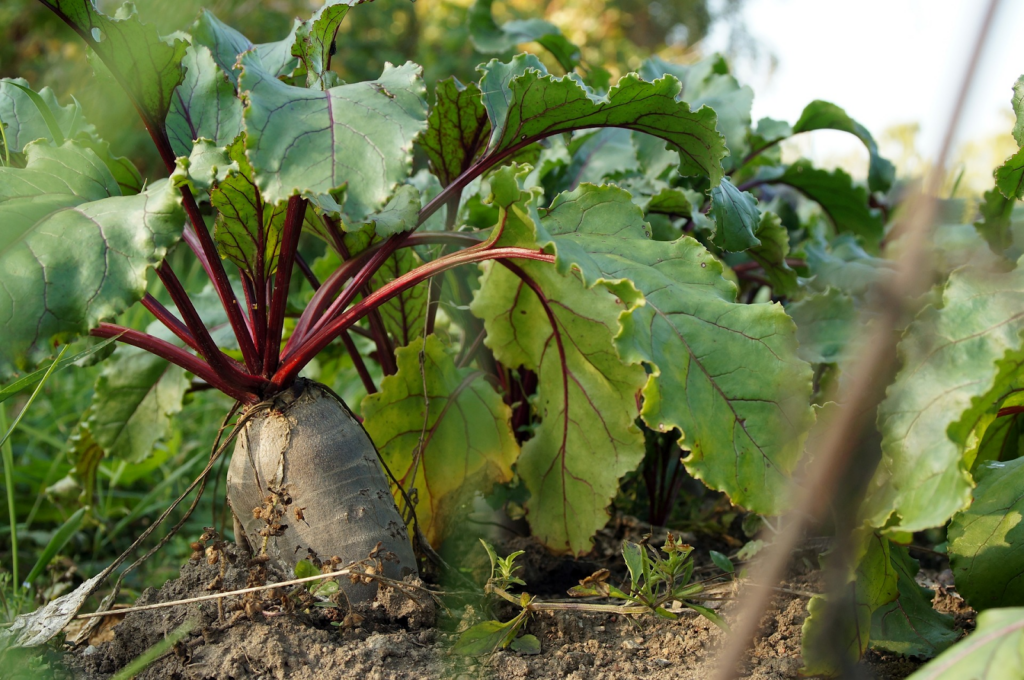
Thankfully, beets are easy-to-grow plants. In fact, they’re great for small gardens and are pretty beginner friendly, if we do say so ourselves.
Here’s a handy guide on how to plant them in your garden!
1. Sow the beets in a tray.
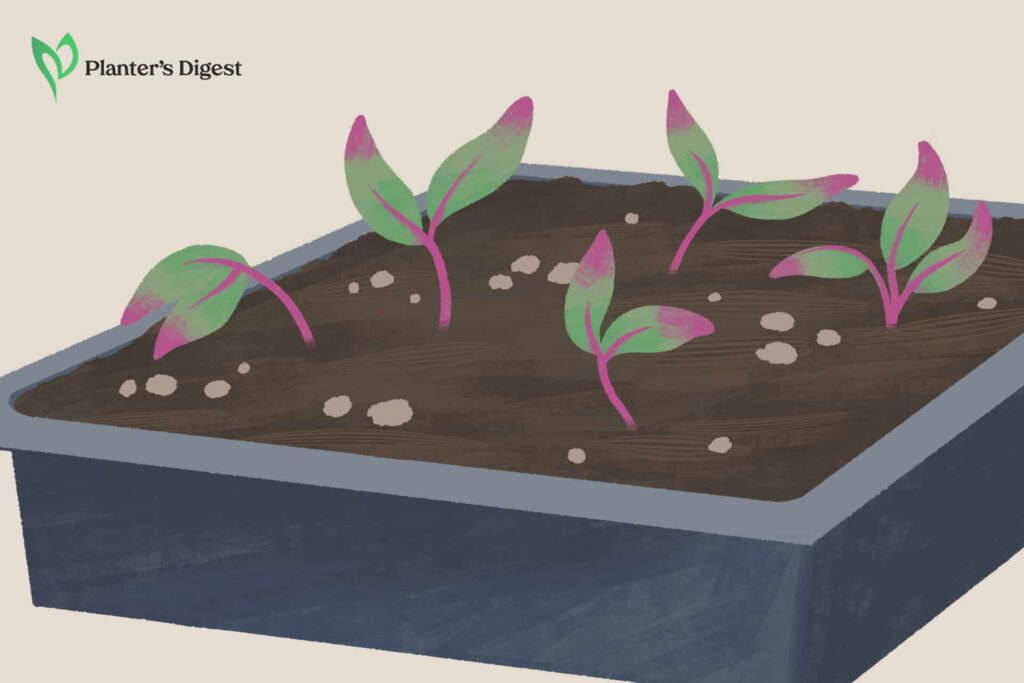
| Difficulty | Easy ●○○○○ |
| Duration | 15 to 30 minutes |
| Things You Need | Beet seeds WaterTray Seed raising mixture |
It’s best to sow the beet seeds first in a tray. This makes it easier to maintain the optimal soil temperature for growing beets, which is 10 to 26°C (50 to 80°F).
Beets grow best in loamy, acid soils with pH levels between 6.0 to 7.5. They need at least 6 hours of direct sunlight every day.
The perfect time to plant beets is between early spring and late summer. This gives the beet plant ample time to germinate before winter.
| How To Do 1. Soak the seeds in warm water overnight to speed up the germination process. 2. In a seed tray, add a seed-raising mixture with a pH level between 6.0 to 7.5. 3. Plant the beet seeds 0.5 inches deep in the tray. 4. Maintain the soil temperature between 10 to 26°C (50 to 80°F) for optimum plant growth. 5. Expose the plant to direct sunlight for at least 6 hours a day. 6. Water daily to keep the soil moist. They need at least 1 inch of water per week. |
2. Transplant the beet seedlings.
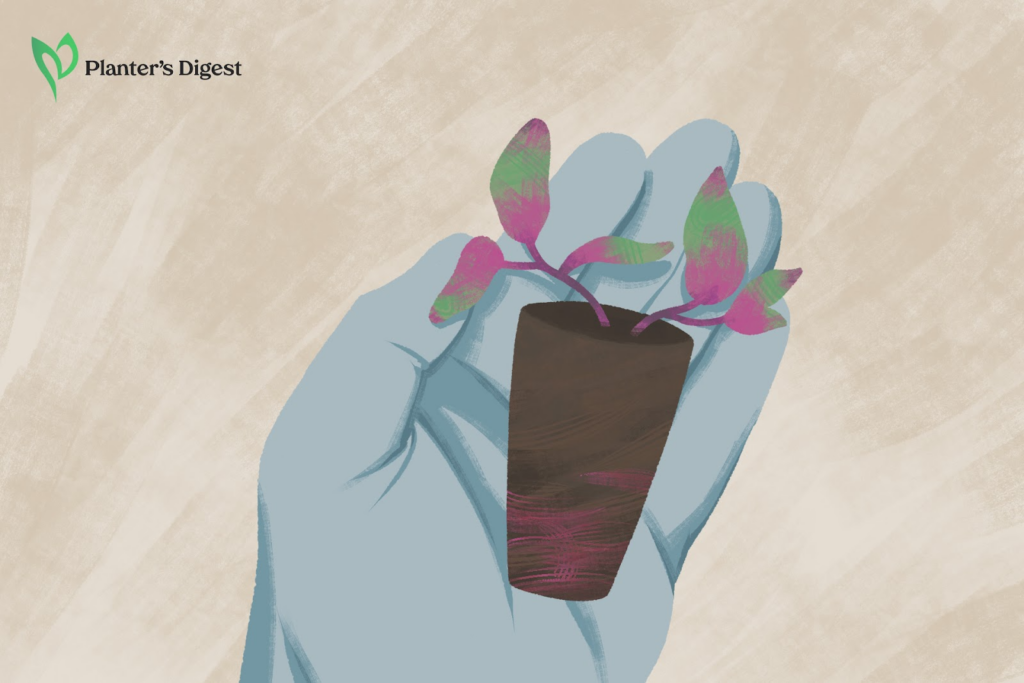
| Difficulty | Easy ●○○○○ |
| Duration | 30 minutes to 1 hour |
| Things You Need | Shovel Beet seedlings Well-drained soil Protection barrier MulchWater |
Transplanting beet seedlings will help double your crop yield. Expect beet seedlings to emerge after 7 to 14 days from planting.
When the beet seedlings appear above the soil with 2-inch leaves, you can begin transplanting the seedling into your garden bed. It is best to do this method during cold mornings.
Make sure the soil is well-drained and rich in organic matter, and that the plant gets at least 6 hours of direct sunlight daily.
| How To Do 1. Remove the leaves or weeds in your garden bed. 2. Transplant the beet seedlings 1 foot apart in all directions. 3. Add a protection barrier by sprinkling snail pallets or a cloche-like barrier to protect the young beet seedlings from slugs and snails. 4. To retain moisture for the beet plant, apply mulch and water regularly. |
3. Harvest the beetroots.
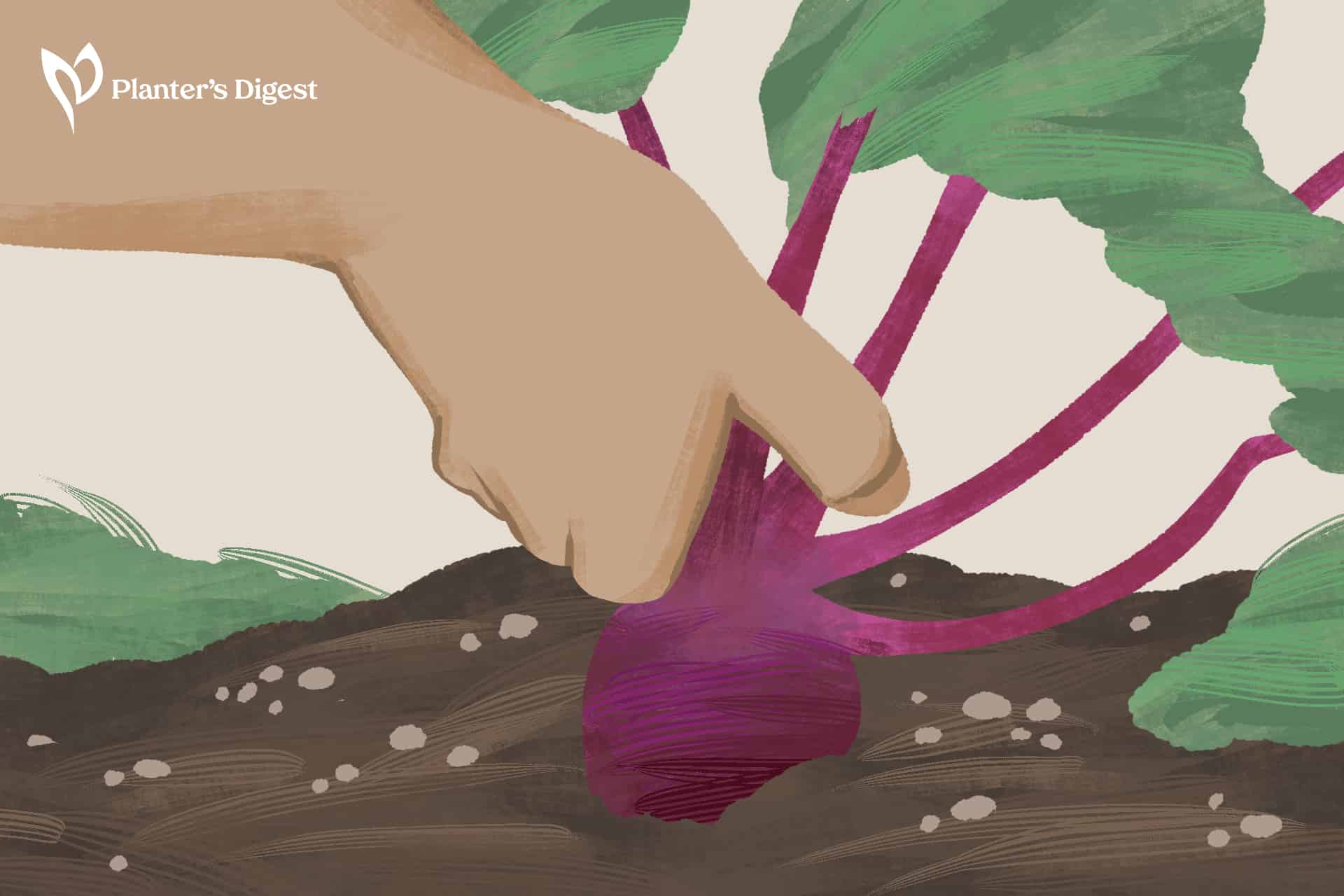
| Difficulty | Easy ●○○○○ |
| Duration | 30 minutes to 1 hour |
| Things You Need | Shovel or garden fork |
Once the plant reaches the size of a golf ball and is visible in the soil line, you can harvest the beet plant’s roots. This usually occurs from 7 to 8 weeks from planting them.
| How To Do 1. Dig out the beet in a gentle twisting motion. Use a shovel or garden fork, but be careful not to pierce the root. 2. Beetroots can be freshly cooked and eaten within 2 to 3 days of harvest. They can also be stored in the refrigerator for 7 to 10 days. |
Frequently Asked Questions
The words beet and beetroot refer to the same plant – Beta vulgaris.
Americans usually refer to the whole plant as beet, while beetroot for its fleshy bulbous part. On the other hand, the British call the entire plant a beetroot.
Beets have a naturally sweet earthy flavor, often likened to the taste of spinach or chard.
Because of their distinct taste, beetroots are common ingredients in salads, hummus, and smoothies. They can be eaten raw, boiled, roasted, or baked.
Beets are true root vegetables because they come from taproots, while radishes are non-root vegetables since they come from bulbs.
Beets are also larger and sweeter than radishes which have a savory, spicy, and peppery flavor.
Beets are not blood-building vegetables. Although beets are a good source of iron for red blood cells, their amount is lower than iron-rich powerhouses like beef, spinach, and eggs.
For instance, beef is a good source of iron and contains 181% more (2.3 mg per 100 grams) than beet (0.8 mg per 100 grams).
Beets are easy to grow since they different tolerate light, weather, and soil conditions. They grow well in partial shade or full sun, which other plants like cucumbers and pumpkins cannot do.
It is also an all-around plant since you can harvest not only its roots but also its leaves. You can store it in your garden to have beets available for most of the year.



